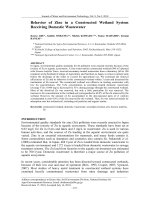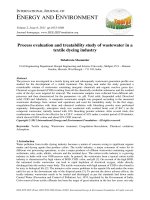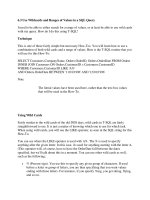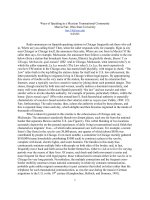Order of words in a sentence
Bạn đang xem bản rút gọn của tài liệu. Xem và tải ngay bản đầy đủ của tài liệu tại đây (11.58 KB, 1 trang )
Order of words in a sentence
English grammar supports very few inflexions. Therefore the order of words in a sentence is very important.
The following is the usual order of words in a sentence.
The subject usually goes before the verb.
The cat chased the mouse. (Here the subject ‘cat’ goes before the verb ‘chased’.)
The object usually goes after the verb.
The dog bit the man. (Here the object ‘man’ goes after the verb ‘bit’.)
If the verb has two objects, the indirect object usually goes before the direct object.
Will you lend me your pen? (Here the indirect object ‘me’ goes before the direct object ‘pen’.)
When the adjective is used attributively, it goes before the noun.
He was wearing a red cap. (Here the adjective red goes before the noun cap.)
Few cats like cold water. (Here the adjective ‘few’ goes before the noun ‘cats’.)
When the adjective is used predicatively, it goes after ‘be’ and other copular verbs.
The boy is asleep. (Here the adjective ‘asleep’ goes after the verb ‘is’.)
The horse became restive. (Here the adjective ‘restive’ goes after the copular verb ‘became’.)
The adverb should be placed close to the word which it modifies.
Nothing ever happens by chance.
He is rather lazy.
He solved two problems.
He never tells a lie.
Stay on top of your writing! Download our grammar guide from www.englishgrammar.org to stay up-to-date.
Powered by TCPDF (www.tcpdf.org)









